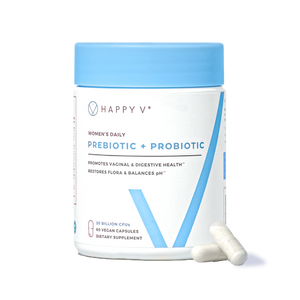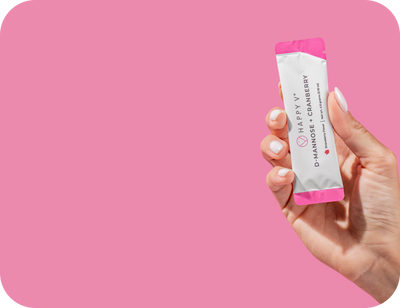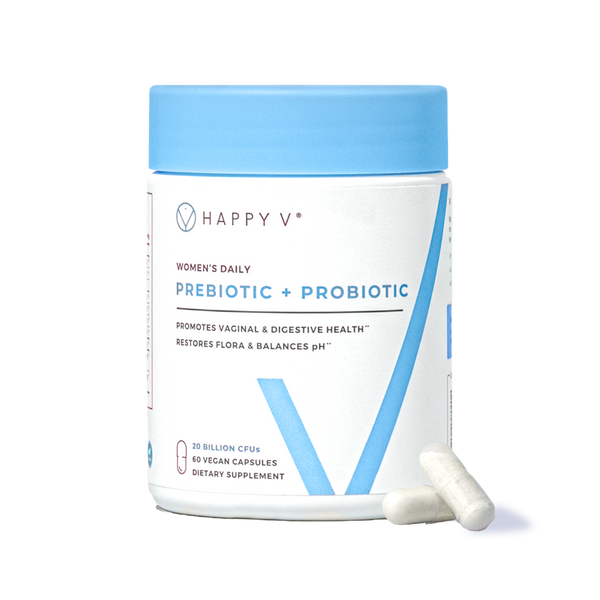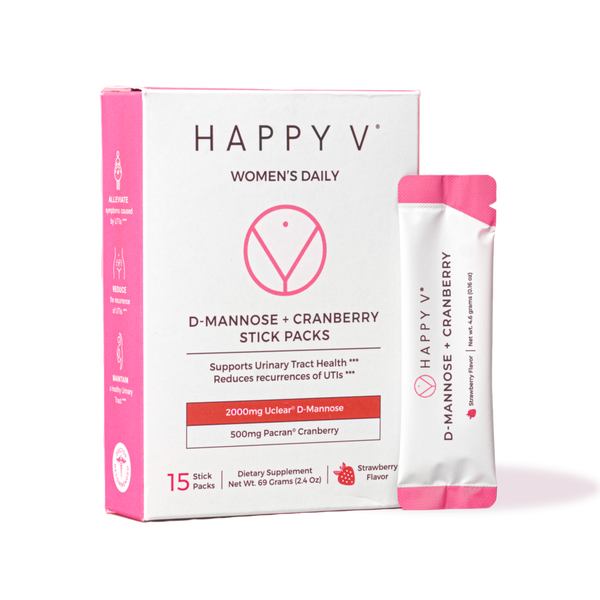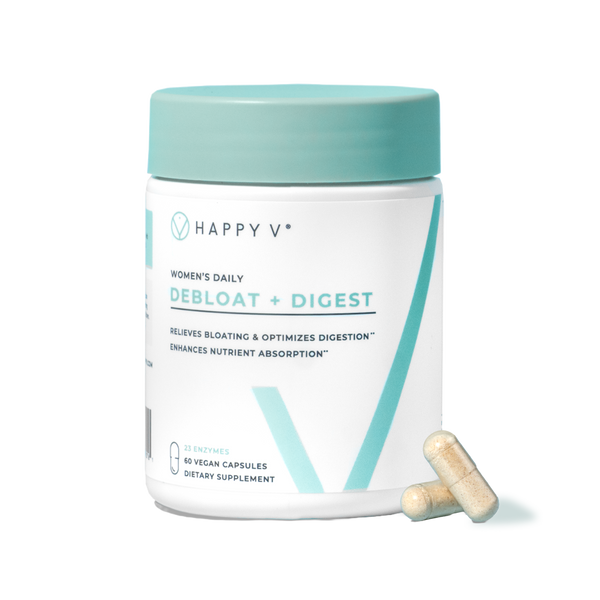- Fact Checked
- June 12, 2025
- 7 min read
Boric Acid For BV: Does It Help or Hurt?
Table of Contents
Table of Contents
You’ve treated BV before—maybe more than once. So why does it keep coming back? Bacterial vaginosis (BV) is a common vaginal infection that can feel like a relentless cycle. With symptoms of BV that include vaginal odor, discharge, and discomfort—plus recurrence rates over 50% within a year—it's no wonder many women are seeking relief beyond standard antibiotics1. Boric acid suppositories have emerged as a promising adjunct—especially for recurrent bacterial vaginosis.
But how effective is it really? Here's what science, clinicians, and the Centers for Disease Control and Prevention (CDC) actually say.
This post is for informational purposes only and does not constitute medical advice. See full disclaimer below.
What Is BV?

Bacterial vaginosis (BV) is the most common cause of abnormal vaginal discharge in women of reproductive age2. It occurs when there is an overgrowth of harmful bacteria that disrupt the balance of the vaginal microbiome—typically resulting in reduced levels of protective Lactobacillus species. BV is not classified as a sexually transmitted infection (STI)3, but new or multiple sexual partners can increase risk4. Common symptoms include a fishy odor, thin grey or white discharge, and vaginal itching—though some women have no symptoms at all.
What Is Boric Acid and Why Are People Using It?
Boric acid (H3BO3) is a naturally occurring compound derived from boron. It’s known for its antibacterial, antifungal, and antiviral properties5. In gynecology and women’s health, intravaginal boric acid has been used for over a century to treat conditions like vaginitis, yeast infections, and BV6.
Unlike conventional antibiotics, which can sometimes lead to resistance or recurring infections, boric acid works by helping restore vaginal flora and acidify pH levels. It’s widely available as over-the-counter boric acid suppositories, or by prescription from compounding pharmacies.
Does Boric Acid Work for BV?
The scientific consensus is still forming—but promising data suggests boric acid can play a valuable role in treating BV infections, especially when used alongside standard treatments.
- It helps lower vaginal pH, disrupting the overgrowth of anaerobic bacteria.
- It may break down bacterial biofilms that protect BV-causing microbes from antibiotics7.
Key Study Highlights:
- A retrospective review reported over 88% cure rates at 12 weeks when boric acid was added to antibiotic therapy8.
- A 2021 study found adjunctive boric acid improved BV treatment outcomes9.
- A phase 2 clinical trial of a boric acid/EDTA insert (TOL-463) showed 59% cure rates—but lacked comparison to standard antibiotics10.
- The BASIC study is the first randomized controlled trial evaluating if intravaginal boric acid is non-inferior to metronidazole11.

While promising, no randomized controlled trial has proven boric acid monotherapy equals antibiotics. More data is needed before it can be considered a primary option.
How Soon Does Boric Acid Work?
Most suppositories begin dissolving within minutes. Many women report symptom relief within 24–48 hours, though full treatment typically takes:
- 7–14 days for acute infections12
- 21 days for recurrent BV (post-antibiotic)13
- Ongoing 2x/week maintenance for relapse prevention14
Can It Cure BV Permanently?
No. Even antibiotics fail to permanently treat BV due to microbial complexity and vaginal flora imbalance. However, boric acid appears to reduce recurrence, especially in women with chronic or recurrent infections.
Is Boric Acid Safe to Use Vaginally?

When used correctly, boric acid is generally well-tolerated. However, the CDC and clinicians emphasize it should only be used intravaginally and avoided in certain populations15.
Who Should Not Use It:
- Pregnant women or those trying to conceive
- Women with vaginal wounds or irritation
- Individuals with kidney disease
- Children
Known Side Effects:
- Vaginal irritation (burning, redness, or watery discharge)
- Mucosal sensitivity in <10% of users16
- Systemic absorption is low but can be increased if the vaginal lining is damaged17
- Oral ingestion is toxic and potentially fatal
Boric acid is not FDA-approved for vaginal use. Despite this, it is widely used and recommended off-label by women’s health professionals18.
How to Use Boric Acid Vaginal Suppositories Correctly

💡Happy V Tip: Boric acid can help relieve symptoms—but it won’t rebuild your microbiome. For long-term results, pair it with a clinically backed probiotic to treat the root cause of recurring BV.
Dosage & Duration:
- 600 mg intravaginally at bedtime
- 7–14 days for treatment, 21 days post-antibiotic, 2x/week for maintenance
Best Practices:
- Use a clean applicator for insertion
- Wear a liner (some discharge is normal)
- Avoid sex and tampons during treatment
- Store away from children
- Never take boric acid orally
Many women who use boric acid suppositories find symptom relief from fishy odor, discharge, and vaginal itching within a few days—but always finish the full course.
Treatment Options for BV
The first-line treatment for BV typically includes antibiotics such as metronidazole or clindamycin, available in oral or vaginal formulations. However, recurrence rates remain high. Alternative or adjunctive treatment options include:
- Boric acid suppositories (especially for recurrent BV)
- Probiotics to restore vaginal flora
- Lifestyle adjustments, such as avoiding douching and using condoms
If BV keeps coming back, consult your provider about combining therapies.
Can You Combine Boric Acid with Antibiotics?
Yes—and it may be the most effective approach to treat BV and reduce recurrence.
Combination Strategy:
- Initial treatment: 7 days of oral metronidazole or clindamycin
- Follow-up: 600 mg intravaginal boric acid daily for 21 days
- Maintenance: Twice weekly as needed
This method is backed by multiple clinical reviews and publications, including the Journal of the American Sexually Transmitted Diseases Association19.
Mechanism:
- Boric acid may break up bacterial biofilms, making antibiotics more effective.
- Combined treatment may reduce the risk of future infections more than either treatment alone.
What Are Other Natural Options for BV?

Probiotics
- Oral or vaginal strains like Lactobacillus crispatus and L. rhamnosus may help restore vaginal health20.
- Evidence is mixed, but some supplements may support recurrence prevention.
Hydrogen Peroxide
- Naturally produced by healthy vaginal bacteria, but commercial douching is not recommended.
Tea Tree Oil
- Antimicrobial in lab studies, but high risk of irritation. Clinical evidence is lacking.
Other Home Remedies and Supplements
- Apple cider vinegar, yogurt, garlic, and vitamin C are commonly used, but data is weak and misuse can worsen symptoms.
When to See a Healthcare Provider
See a clinician if:
- Symptoms persist beyond 7–10 days
- You experience pain, fever, or abnormal bleeding
- You’re pregnant or immunocompromised
- You’ve had multiple sexual partners or suspect an STI
BV symptoms (e.g., vaginal discharge, vaginal odor, itching) often resemble sexually transmitted infections like chlamydia or gonorrhea. Untreated BV can increase the risk of STIs and complications like pelvic inflammatory disease21.
The Centers for Disease Control and Prevention (CDC) emphasizes testing and proper diagnosis to ensure appropriate care.
BV can flare during hormonal changes, so women in menopause should also consult their provider if they experience persistent symptoms.
The Bottom Line – Is Boric Acid Right for You?
Boric acid is not a first-line therapy to treat BV, but it is a clinically supported option—especially for women dealing with recurrent infections. While not FDA-approved, it’s used widely by OB/GYNs and supported by promising research.
If you’re not pregnant, have normal kidney function, and are under the care of a medical provider, boric acid may help restore your vaginal microbiome and prevent future infections.
How Happy V Supports Vaginal Health
Want real results—not just short-term relief? Try Happy V’s doctor-formulated boric acid suppositories and targeted probiotics for total vaginal support.
Explore Our BV Relief Kit →
At Happy V, we believe science-backed solutions should be gentle, effective, and transparent. That’s why our approach to BV includes both clinically dosed boric acid vaginal suppositories and targeted probiotics to help rebalance your vaginal flora from the inside out.
Explore our BV Relief Kit—carefully formulated to support real women dealing with real challenges and committed to total vaginal wellness.
Shop Our BV Relief Kit →
Boric Acid Treatment Timeline

| Condition | Boric Acid Use | Notes |
| Acute BV | 600 mg nightly for 7–14 days | Start after confirming diagnosis |
| Recurrent BV | 600 mg nightly for 21 days | Often used after antibiotics |
| Maintenance Therapy | 600 mg twice weekly | Used to prevent future infections |
Disclaimer: This blog is for informational and educational purposes only. It is not intended to diagnose, treat, cure, or prevent any disease or medical condition. Please consult your healthcare provider before starting any new supplement, treatment, or wellness routine.
